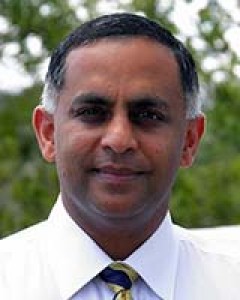Now published, see the full article 
Early Abstract:
Introduction: The re-emergence of pneumoconiosis, particularly among coal miners (i.e., Black Lung), in the United States is a challenge for rural communities since more miners require specialized care while expertise is scarce. The Miners’ Wellness TeleECHO (Extension for Community Health Outcomes) Clinic, jointly held by the University of New Mexico and a community hospital in New Mexico, provides structured telementoring to professionals caring for miners, including clinicians, respiratory therapists, home health professionals, benefits counselors, lawyers/attorneys, and others, forming a virtual ‘community of practice’. This approach has not been utilized and evaluated previously.
Methods: Our bimonthly program uses the ECHO telementoring model, which is based on the following principles. 1) It utilizes technology to leverage scarce mentoring resources. 2) It uses a disease-management model that is proven to improve outcomes in other disease states, by reducing variation in processes of care and sharing best practices. 3) It uses the principle of case-based learning with highly contextualized discussions, which fulfills key learning theory principles. 4) It creates a virtual community of practice. 5) It uses an Internet-based database to monitor outcomes. This one-year cross sectional study from Sep 2018-Sep 2019 used: 1) geographical mapping of all attendee locations; 2) web-based continuing medical education surveys completed by attendees using iECHO software; and 3) a REDCap-based survey of a convenience sample of participants, which obtained detailed information on demographics, knowledge, self-efficacy, and collective efficacy. Knowledge sharing among participants were examined using insights and methods from social network analysis. Subgroup analysis involved comparisons between clinical versus non-clinical professional groups, and fresh versus existing participants. Groups were compared using Fisher’s exact test for categorical variables, and non-parametric Wilcoxon ranked sum test or Student t-test for continuous variables.
Results: Participants were largely located in pneumoconiosis mortality hotspots of the United States. In a convenience sample of 70 participants, clinical professional groups such as clinicians (29%), home health professionals (20%), and respiratory therapists (17%) constituted the majority of the stakeholders. Participants demonstrated the lowest knowledge score on ‘legal pneumoconiosis’ among the knowledge areas questioned; reported low self-efficacy with respect to managing miners’ conditions and interpreting test results; and rated the learning community highly in terms of trust (86%), willingness to help each other (93%), and being closely knit (87%). Analysis of knowledge sources indicated that participants receive substantial proportions of knowledge from individuals outside of their stakeholder and professional groups, but proportions differ among clinical versus non-clinical professional groups, as well as fresh versus existing participants.
Conclusions: Our study demonstrates the successful creation of a virtual multidisciplinary community of practice in pneumoconiosis mortality hotspot rural regions of the U.S., with participants reporting multidisciplinary knowledge transfer. The community is regarded highly by participants regarding trust, willingness to help, and being closely knit. This innovative educational approach may help ensure the delivery of high-quality interdisciplinary care to rural miners in pneumoconiosis mortality hotspots in the U.S.

